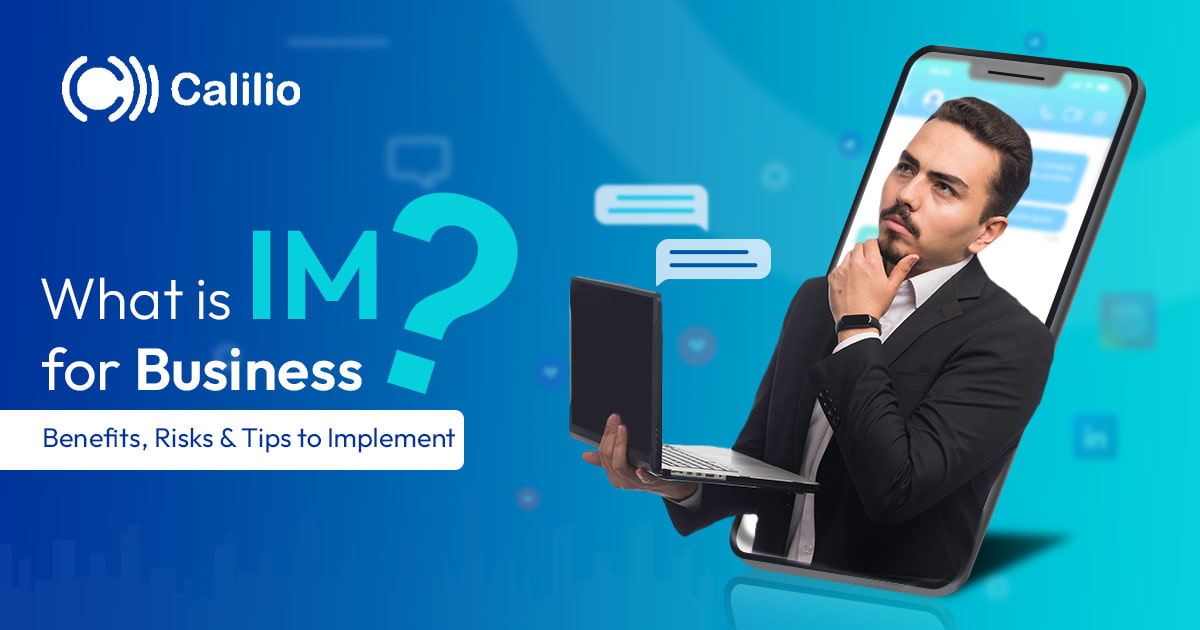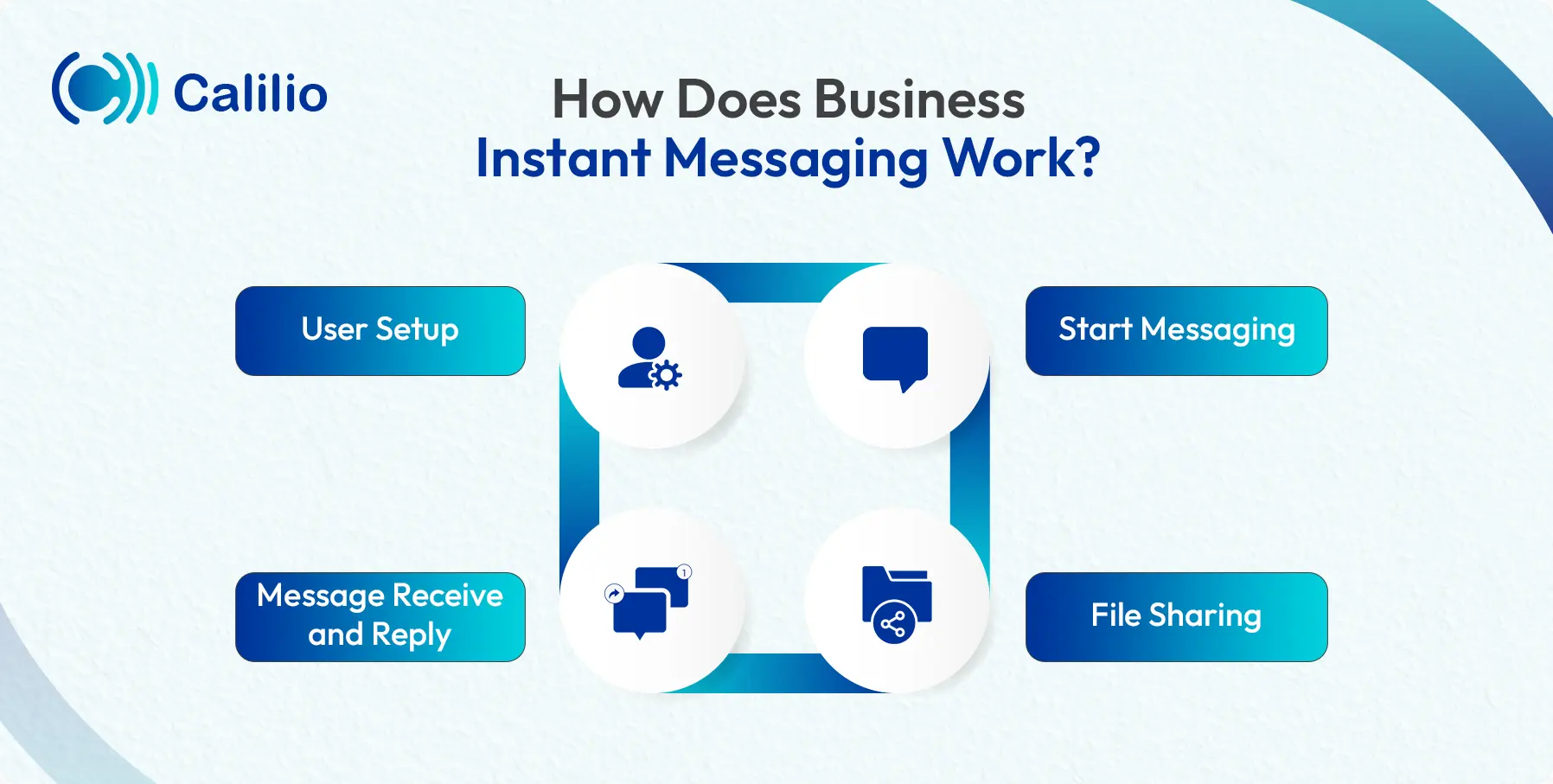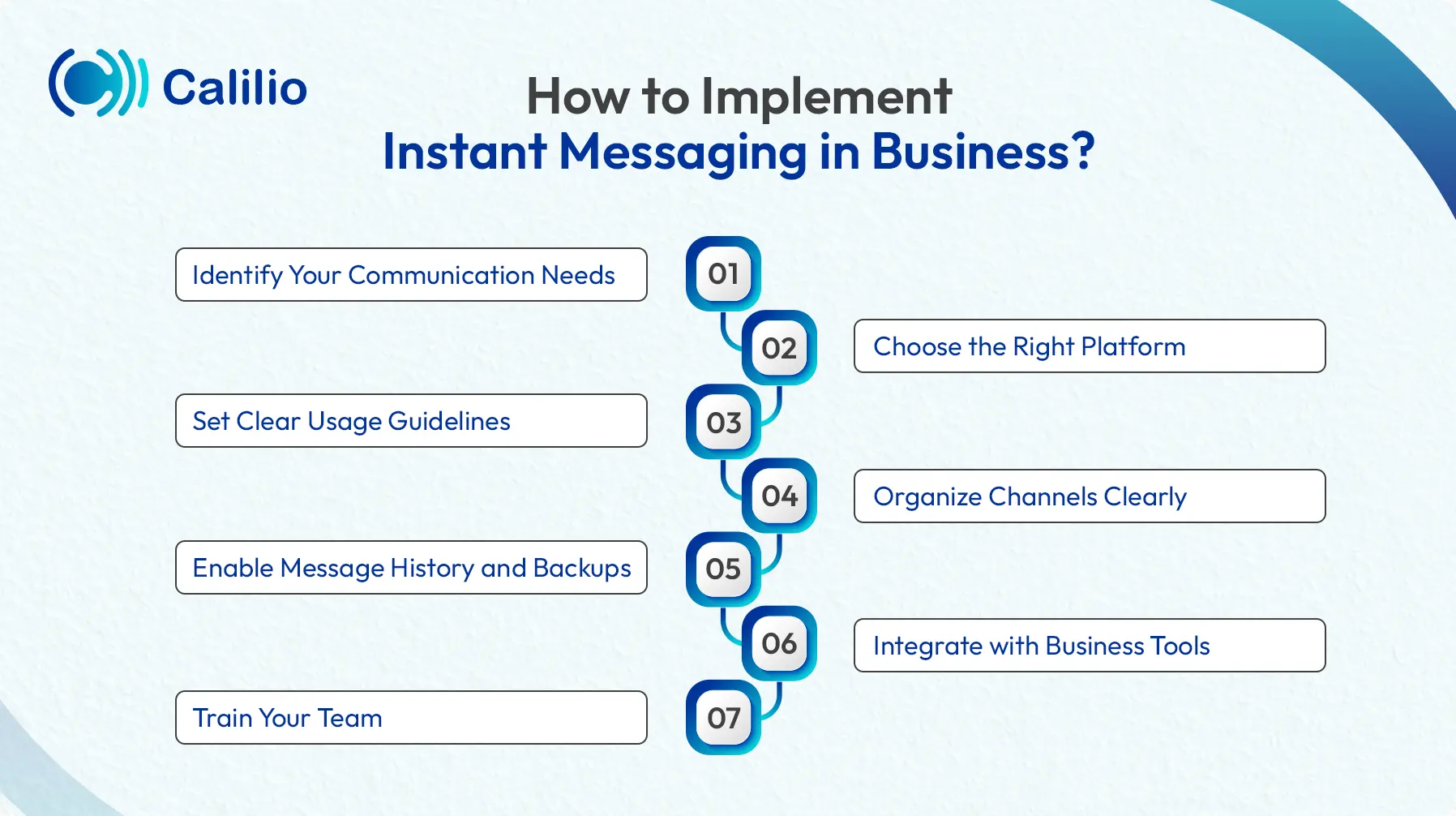IM for Business: Benefits, Risks, & Tips for Implementation

Communication plays a big role in how smoothly a team works. But traditional methods like email often fall short when quick and real-time responses are needed. The delay in back-and-forth messages can lead to confusion, missed deadlines, and reduced productivity within your team.
That’s why many companies rely on instant messaging for business communication as part of their daily communication. It allows teams to send quick messages, share files, ask questions, and stay on the same page.
In this blog, we’ll explore what IM for business means, how it works, its advantages and risks, and how to use it effectively in your workplace.
Key Highlights:
Instant messaging for business is a real-time communication tool that helps teams exchange messages, share files, and collaborate instantly.
Instant messaging is faster, more interactive, and feature-rich compared to traditional text messaging like SMS or email.
It boosts teamwork, reduces delays, supports remote work, and improves both internal and customer communication.
If not managed properly, IM can lead to security risks, message overload, and disrupt work-life boundaries.
To use IM effectively, businesses must choose the right tool, organize chats clearly, and ensure secure communication.
What is Instant Messaging for Business?
Instant messaging (IM) for business refers to the use of a real-time communication tool that enables employees to send and receive text messages instantly, facilitating quick and direct communication. It allows you to send quick text-based messages, share documents, and collaborate instantly, without relying on email or phone calls.
Unlike other chat apps, IM for business includes features tailored for professional use. These often include admin controls, user permissions, integration with tools like CRMs and calendars, encrypted messaging, and searchable chat history. Some platforms may also support voice and video calls, but text messaging remains the core function.
Types of Business Instant Messaging
There are two main types of instant messaging in business communication: application-based and web-based instant messaging. Each has its own features and advantages based on your business needs.
Application-based Instant Messaging
App-based Instant messaging requires users to download and install a specific app on their device. These business communication tools are usually rich in features and are used for long-term secure interaction within organizations. Microsoft Teams, Slack, and Discord are some of its common examples.
Web-based Instant Messaging
Web-based instant messaging is run directly in a browser, so it does not require users to download dedicated software to use it. These platforms are accessible via a web link and often provide free IM for business. WhatsApp web, Facebook Messenger in a browser, and live chat widgets on websites are some of its common examples.
Improve Your Communication With A Modern Telephony Messaging System!
How Does Business Instant Messaging Work?
IM for business works through dedicated apps or platforms that allow employees to communicate over the internet instantly. The process begins with setting up the system, creating a user account, and assigning the role. From there, employees can start chatting, share files, and connect with other business tools.

Here's how it works:
- User Setup: The business chooses an IM program for business and creates accounts for all team members. Each user gets login access with assigned roles and permissions.
- Start Messaging: User opens a chat window, types their message, and hits “send". A member can send direct messages (DMs) to one person or start group chats with teams.
- Message Receive and Reply: The recipient sees the message in the chat window and replies directly from there.
- File Sharing: Employees can share documents, images, and files directly through the messaging platform. This streamlines collaboration without the need for email attachments.
What Are the Differences Between Business Instant Messaging and Traditional Text Messaging?
Instant messaging (IM) uses internet-based platforms to deliver real-time communication, while traditional text messaging (SMS) relies on cellular networks and is slower comparatively.
Quick insights on Instant Messaging vs. Traditional Text Messaging:
Feature | Instant Messaging | Traditional Messaging |
Definition | Real-time text communication between users | General exchange of messages, not necessarily in real time |
Speed | Fast; messages are sent and received instantly | May involve delays; not always real-time |
Internet Requirement | Requires an internet connection | May work without internet (e.g., SMS) |
Presence Indicator | Shows user status (online, offline, typing, etc.) | Usually no live status indicators |
Features | Multimedia sharing, emojis, typing indicators | Basic text |
Examples | WhatsApp, Facebook Messenger, Slack | Email, SMS, and messaging via contact forms |
Platform | Web, mobile apps, desktops | Varies: email clients, SMS apps, websites |
What Are the Benefits of Using IM for Business?
The benefits of instant messaging in the workplace include faster communication, improved teamwork, and reduced reliance on email. It also supports remote work, enhances customer service, and keeps conversations organized.
1. Real-Time Communication
Messages are delivered instantly, allowing employees to respond quickly. This leads to faster decision-making, keeps workflows uninterrupted, and enhances enterprise communication.
2. Improved Team Collaboration
Teams can communicate in dedicated channels or groups related to projects, departments, or topics. This ensures all relevant information is accessible and that everyone stays informed, reducing confusion and improving teamwork.
3. Easy To Use
Instant messaging apps are simple and familiar, so most people can start using them without any training. Since many already use these apps to talk to friends and family, switching to business messaging feels natural and effortless.
4. Supports Remote and Hybrid Work
For businesses with remote or hybrid teams, instant messaging tools maintain a continuous line of communication. It ensures seamless communication between remote and in-office teams.
5. Reduces Email Overload
Instant messaging minimizes the need for lengthy email threads by enabling quick, direct conversations. This helps employees stay focused on their work without getting distracted by too many emails.
6. Faster Customer Support
Support teams can use instant messaging tools to quickly respond to customer questions through live chat or integrated messaging platforms. This reduces wait times, enhances the customer experience, and builds trust.
7. Organized Threads and Channels
Businesses can create topic-specific threads or channels for each client, team, or initiative. This organization makes it easy to locate past conversations and decisions, improving transparency and accountability.
What Are the Risks of IM for Business?
Using instant messaging for business can expose sensitive data to security threats, overwhelm users with constant alerts, and disrupt work-life balance. Over time, these issues can reduce focus and impact productivity.
I. Data Security Threats
Instant messaging apps can be vulnerable to hacking, phishing, or unauthorized access, especially if employees use unsecured networks or personal devices. It involves the risk of exposing sensitive business information.
II. Lack of Message Control
Unlike emails, instant messages can be quickly sent, forwarded, or deleted. This makes it harder to track communication or keep proper records.
III. Information Overload
Constant pings and group chats can become overwhelming, reducing focus and productivity. Without proper message management, important updates may get lost in an overflow of constant messages.
IV. Disrupt Work-Life Boundaries
Instant access to team members can create pressure to respond outside working hours. This can lead to burnout and reduce employee satisfaction.
How to Implement Instant Messaging in Business?
To successfully implement IM for business, first identify the communication needs of your business, then choose the right platform, organize channels clearly, and train your team. Additionally, consider integrating with other business tools and enabling message history and backup to ensure smooth collaboration and protect valuable information.

1. Identify Your Communication Needs
Understand what your team needs—quick updates, project discussions, or customer support.
2. Choose the Right Platform
Pick an IM platform that matches your business needs. Look for features like file sharing, group chats, message history, user controls, and integration with your existing tools.
3. Set Clear Usage Guidelines
Define when to use instant messaging and when to switch to email or calls. Make sure all employees follow the same rules to avoid confusion.
4. Organize Channels Clearly
Create separate chat groups for each department, team, or project. This helps everyone know where to go for updates or discussions and avoids cluttered or confusing threads. Also, a well-structured messaging system helps manage employee workload, provides clarity, and improves focus across teams.
5. Enable Message History and Backups
Turn on message storage features to keep a record of important chats. Maintaining records helps with audits, tracking decisions, and future reference.
6. Integrate with Business Tools
To make messaging more powerful, connect the platform with other business tools like project management systems, CRMs, calendars, or file storage services.
7. Train Your Team
Provide basic training to your employee, explain the benefits, and show how it fits into their daily work. When your employees understand the platform’s value and how to use it correctly, they’re more likely to adopt it and stick with it.
Conclusion
Instant messaging for business offers a simple yet powerful way to improve workplace communication. It supports real-time collaboration, faster decision-making, and smooth coordination across teams, whether they work remotely or in the office. With the right platform, instant messaging can strengthen internal operations, enhance customer service, and support long-term growth.
If you’re in search of such a platform, Calilio is the standout choice. Our VoIP-based phone system has a built-in internal messaging feature that allows your team to chat, share files, and leave notes easily in the chatbox. You can also message clients directly for external communication.
Your Phone System Just Got Cheaper
Virtual numbers from just $2/month
Call rates starting as low as $0.016/min
The most cost-effective VoIP phone system for businesses
Powered by advanced AI telephony features
Compare low-cost business phone systems
Frequently Asked Questions
Does instant messaging use cellular data?
Yes, instant messaging apps like WhatsApp, iMessage, and Facebook Messenger use cellular data when you're not connected to Wi-Fi. It sends messages over the internet, so data is required to send and receive messages in real time.
Does instant messaging allow text only?
Is there a free IM tool for business?
How secure is instant messaging in the workplace?

Still have questions?
Can’t find the answer you’re looking for? Please chat with our friendly team.
Stay in the loop
Get the latest call insights, trends, and updates delivered straight to your inbox.
By subscribing, you agree to receive updates from Calilio.
You can unsubscribe anytime.
Phone numbers
Get International Phone Numbers
Singapore
|Australia
|New Zealand